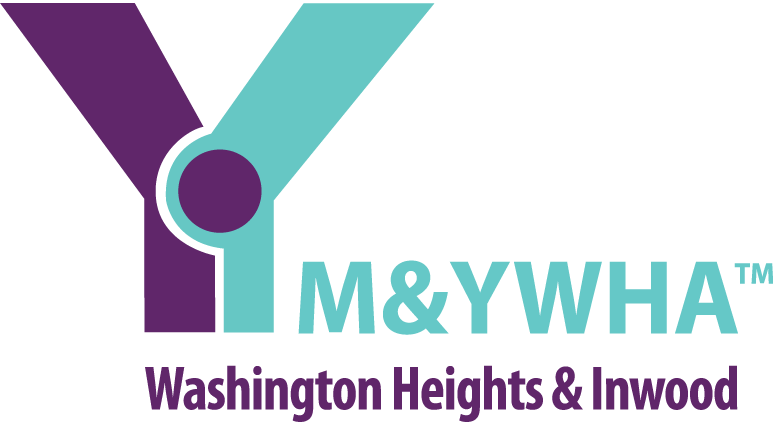ከኛ ጋር በጥምረት “በመንከባከብ ውስጥ አጋሮች” በኒውዮርክ ዩጃኤ-ፌደሬሽን የተደገፈ ፕሮግራም, የእያንዳንዱን ግለሰብ ታሪክ የበለጠ ለመረዳት Y ከስድስት የአካባቢው የተረፉ ሰዎች ቃለ መጠይቅ ያቀርባል. እነዚህ ቃለ መጠይቆች በዕብራይስጥ የድንኳን ጋለሪ ውስጥ ይታያሉ “የጦርነት ጊዜ እና ከዚያ በላይ ማጋጠም: የተነፈሱ ሆሎኮስት የተረፉ ሰዎች ሥዕሎች”. ጋለሪው አርብ ኖቬምበር 8 ይከፈታል።.
Fredy Seidel lives in Washington Heights. Through this initiative, he has learned more about the Y and plans to become a member of the Center for Adults Living Well @ the Y.
Fredy Seidel(sculpture by Peter Bulow: WWW.PETERBULOW.COM)
After Kristallnact, the Seidels realized that it was no longer safe to stay in Germany so they decided to contact a Jewish agency in Breslau to begin preparations to leave. There was a Jewish organization that worked tirelessly to help Jews get out of Germany. The organization’s first priority was helping to get prisoners out of concentration camps, which was a very expensive task because the German government would not let prisoners leave the camps unless they were able to produce a roundtrip ticket out of the country. Fredy’s parents received a telegram at their synagogue on Saturday morning during services from this agency, stating that the agency found money for them to leave Germany and that they should come immediately. The agency had enough money to rescue Fredy’s parents, grandmother, and one of his brothers, Horst. Fredy’s oldest brother Rudi would be sent to Berlin to stay with an interfaith family in the hope that he would receive an affidavit to go to America. However, Rudi would never make it to America; while he was in Berlin, he was picked up from the street and sent to Auschwitz.
ውስጥ 1939, the family left Bremerhaven, Germany and arrived in Shanghai a month later. After getting off the boat, the Seidel’s were taken to the ghetto that had been organized by the local Sephardic community. Fredy Seidel was born on May 1, 1941 in Shanghai, China. While in Shanghai, Fredy’s parents attempted to make a living by doing anything that they could to make money. The conditions were poor and made it very difficult to find work. The ghetto of 25,000 people was fed by a community kitchen that was also funded by the local Sephardic community. The ghetto had one synagogue, which had been built by Russian Jews. The synagogue became known as Ohel Moishe and that synagogue is still standing today.
The Jews who lived in Shanghai ghetto were housed in warehouses that were divided into 10 rooms. Each room provided shelter to 28 people. There were no walls; it was just one large room with bunk beds. Fredy’s mom would use a trunk and tablecloth to make a table for their meals. Conditions were not very sanitary. For example, the toilet was about 150 feet away from the room, so the Seidel family would keep pot under their bed in case they had to go to the bathroom in the middle of the night. In the morning, they would take their pots to the toilet to dispose of the waste. There were two community showers, one for men and one for women; this did not allow for any privacy. Approximately 3000 people died from malnutrition and unsanitary conditions. Fredy recalls that you were not allowed to leave the ghetto without special permission from the police commissioner.
Not all of the refugees in the ghetto were Jewish. Fredy remembers that there were people who came because they had interfaith marriages. When asked about his community, Fredy states, “For me, I felt a very strong sense of Judaism and a very strong belief in G-d.” While living in Shanghai, Fredy recalls learning a lot about Judaism and what it means to have faith. He goes on to explain that a large portion of the refugees came from a town in Germany called Selisia.
The Jewish community in Shanghai was very tightknit and poverty stricken. People tried to make the best of their time there. The Jews created their own newspaper called the Yellow Post. Fredy recalls the Chinese being very helpful and shared what little they had with the Jewish community.
Fredy attended four Jewish schools within five years in Shanghai. He also attended a British school. Fredy recalls having to attend Anglican services while in the British school. There, the students were punished by the teachers with a bamboo stick, which they used to hit the children. This was very different from his experience in the Jewish schools. He described the Jewish schools as very nurturing. Since there were many refugee students left, a small school was created to accommodate them. There were three students to every teacher. This was not very conducive to learning because of the way the teacher’s attention was decided.
While in the ghetto, Fredy’s fathers tried making a living by collecting old razor blades, sharpening them, and trying selling them to the Chinese, but this did not work out. He then tried to become a shoemaker. Additionally, he was the cantor at Ohel Moshe synagogue.
The Red Cross came to Shanghai and distributed questionnaires to the refugees to figure out who was looking for their relatives. A year later, they came back and posted a large bulletin board on a wall with a list of names of the people they had been looking for. This is how Fredy’s father found out that his oldest son had been murdered in Auschwitz. He also found out that his parents and siblings had all been killed. Fredy remembers, “my father collapsed into the arms of my brother. That’s how people found out what happened to members of their family. It wasn’t the most sensitive way to find out.”
Eventually, the Chinese government told the Jews that they could not stay there any longer. In 1952, the Seidel’s returned back to Germany. They were one of the last thirty families to leave Shanghai. Fredy’s parents would get startup money to rebuild their lives once again in Germany.
When the Seidel’s got back to Germany, it had been divided into East and West Germany. Fredy’s parents were from a German town called Breslau, which had become a part of Poland, and was considered to be a part of West Germany so the restitution that was promised upon their return to Germany did not apply to them. This was financially devastating to the Seidel’s. This made the Seidel’s resort to smuggling good between East and West Germany in order to help them survive. The Seidel’s moved into a small apartment and Fredy’s father became a cantor again. On February 2, the Seidel’s received their visa to come to America. On February 22, Fredy’s mother was admitted to the intensive care unit where she would stay until September and would come out in a wheelchair. Fredy’s bar mitzvah was going to be in May. He was supposed to be the first boy with two Jewish parents to be bar mitzvahed in post-war Berlin. Many rabbis came from all over to be there for this occasion. The night before his bar mitzvah, Fredy and his father decided that they did not want to have the bar mitzvah without his mother being present and healthy again. He ended up waiting until after she was discharged from the hospital to have his bar mitzvah.
The Seidel’s were stuck in Germany for 7 years. In 1959, the Seidel’s made their way to America. The family decided to go to San Francisco to visit one of Fredy’s brothers before settling down in New York. What was supposed to be a two week trip turned into a yearlong stay. While in San Francisco, Fredy worked as a busboy and then a stock boy to try and help his family financially. After his family decided to move to New York, Fredy worked in Gimble’s selling stamps. He had dreams of attending Columbia University and after working at Gimble’s for a short while, his dreams were realized. Fredy enrolled at Columbia University at 20 አመታት ያስቆጠረ. Although he would be drafted into the army while at Columbia, because of the tropical illnesses he contracted as a child in Shanghai he was not accepted into the army. In his last job, Fredy worked as a paralegal at a law firm for 20 ዓመታት.
ይህ ቃለ መጠይቅ የተካሄደው በ Y's Partners in Careing ተነሳሽነት በሃሊ ጎልድበርግ ሲሆን የYM ነው&YWHA የዋሽንግተን ሃይትስ እና ኢንዉድ. ከ Y እና ከቃለ መጠይቁ ጠያቂው የጽሁፍ ፍቃድ ሳይኖር ይህንን ቁሳቁስ መጠቀም በጥብቅ የተከለከለ ነው።. ስለ ባልደረባዎች እንክብካቤ ፕሮግራም የበለጠ እዚህ ይወቁ: http://ywashhts.org/partners-caring-0
የዕብራይስጥ ድንኳን አርሚን እና ኤስቴል ጎልድ ክንፍ ጋለሪጋር በኩራት አጋርነትየ YM እ.ኤ.አ.&YWHA የዋሽንግተን ሃይትስ እና ኢንዉድወደ እኛ ይጋብዝዎታልህዳር/ታህሳስ, 2013 ኤግዚቢሽን“የጦርነት ጊዜ እና ከዚያ በላይ ማጋጠም: የተነፈሱ ሆሎኮስት የተረፉ ሰዎች ሥዕሎች” በፎቶግራፎች እና በቅርጻ ቅርጾች: ያኤል ቤን-ጽዮን, ፒተር ቡሎው እና ሮጄ ሮድሪጉዝ. በማስታወስ ውስጥ ካለው ልዩ አገልግሎት ጋር በማጣመርየእርሱ75የክሪስታልናክት ኛ አመታዊ -የተሰበረ ብርጭቆ ምሽትአገልግሎቶች እና የአርቲስት መክፈቻ አቀባበል, አርብ, ኖቬምበር 8, 2013 7:30 ከሰዓት በኋላ.
መግለጫ ከ Y : ” ለበርካታ አስርት ዓመታት የዋሽንግተን ሃይትስ/ኢንዉድ ዋይ ነበር።, እና ሆኖ ይቀጥላል, መጠጊያ ለሚፈልጉ ሰዎች መሸሸጊያ, አክብሮት እና ግንዛቤ. ወደ ቤታችን ገብተው በፕሮግራሞቻችን ላይ የሚሳተፉ ብዙዎች ልንገምታቸው እንኳን የማንችለውን ፈተናና መከራ አሳልፈዋል።. ለአንዳንዶች, ማን የዚህ ኤግዚቢሽን አካል ይሆናል, ከእንዲህ ዓይነቱ አስፈሪነት አንዱ “ሆሎኮስት” በሚል ስያሜ በዓለም ዘንድ ይታወቃል። – በአውሮፓ ስድስት ሚሊዮን አይሁዶች ላይ ስልታዊ ግድያ
እኛ በ Y ያለፈውን እናስታውሳለን።, በዚያ ዘመን የኖሩትንና የሞቱትን አክብር, እና ለመጪው ትውልድ እውነትን ጠብቅ. ለራሳችን እና ለልጆቻችን ስንል, የጦርነትን መጥፎነት ያጋጠሙትን ሰዎች ታሪክ ማስተላለፍ አለብን. ለወደፊት የምንማራቸው ትምህርቶች አሉ።. ቃለመጠይቆቹ የተመዘገቡት በሃሊ ጎልድበርግ ነው።, "በእንክብካቤ አጋሮች" የፕሮግራም ተቆጣጣሪ. ይህ ወሳኝ ፕሮግራም የተቻለው ከኒውዮርክ ዩጃኤ-ፌደሬሽን በተገኘ ልግስና ነው።, በዋሽንግተን ሃይትስ እና ኢንዉዉድ ከሚገኙ ምኩራቦች ጋር ያለውን ግንኙነት ለማሻሻል የተነደፈ. “
የእኛ የጋራ የጥበብ ትርኢት ከሆሎኮስት የተረፉ ሰዎችን የቁም ምስሎች እና ቃለመጠይቆች ያሳያል, ሃና አይስነር, ቻርሊ እና ሊሊ ፍሬድማን, ፐርል Rosenzveig, ፍሬዲ ሲዴል እና ሩት ዋርታይመር, ሁሉም የዕብራይስጥ ድንኳን አባላት ናቸው።, ብዙ የጀርመን አይሁዶች ናዚዎችን ሸሽተው ወደ አሜሪካ በመምጣት እድለኛ የሆነበት የአይሁድ ጉባኤ, በ 1930 ዎቹ መገባደጃ ላይ ተቀላቅሏል. በተጨማሪም ከሆሎኮስት የተረፉትን ጊዚሌ ሽዋርትዝ ቡሎውን እናከብራለን- የአርቲስታችን ፒተር ቡሎ እናት እና ከሁለተኛው የዓለም ጦርነት የተረፉት ያን ኔዝናንስኪ - የ Y ዋና ፕሮግራም ኦፊሰር አባት, ቪክቶሪያ ኔዝናንስኪ.
ልዩ የሰንበት አገልግሎት, ከድምጽ ማጉያዎች ጋር, የ Kristallnacht 75 ኛ ክብረ በዓል መታሰቢያ (የተሰበረ ብርጭቆ ምሽት) የወርቅ ጋለሪ/Y ኤግዚቢሽን ከመከፈቱ በፊት ነው።:አገልግሎቱ በ 7 ሰዓት ይጀምራል:30 ከሰዓት በኋላ. ሁሉም እንዲገኙ ተጋብዘዋል.
ለጋለሪ ክፍት ሰዓቶች ወይም ለበለጠ መረጃ እባክዎን ወደ ምኩራብ በ ይደውሉ212-568-8304 ወይም ተመልከትhttp://www.hebrewtabernacle.orgየአርቲስት መግለጫ: ያኤል ቤን-ጽዮንwww.yaelbenzion.comያኤል ቤን-ጽዮን በሚኒያፖሊስ ተወለደ, ኤምኤን እና በእስራኤል ያደጉ። እሷ የአለም አቀፍ የፎቶግራፍ አጠቃላይ ጥናት ፕሮግራም ተመራቂ ነች። ቤን ጽዮን የተለያዩ ድጋፎችን እና ሽልማቶችን ተቀባይ ነው።, በጣም በቅርብ ጊዜ ከፑፊን ፋውንዴሽን እና ከ NoMAA, እና ስራዋ በዩናይትድ ስቴትስ እና በአውሮፓ ታይቷል. ሥራዋን ሁለት ነጠላ ታሪኮችን አሳትማለች።. የምትኖረው በዋሽንግተን ሃይትስ ከባለቤቷ ጋር ነው።, እና መንትያ ልጆቻቸው።
የአርቲስት መግለጫ: ፒተር ቡሎው: www.peterbulow.com
እናቴ በልጅነቷ, በሆሎኮስት ጊዜ ተደብቆ ነበር።. ለዓመታት, የእሷ ልምድ, ወይም የሷ ልምድ መስሎኝ ነበር።, በእኔ ላይ ትልቅ ተጽዕኖ አሳድሯል. ይህ ተጽእኖ በግሌ እና በሥነ ጥበቤ ሕይወቴ ውስጥ ይንጸባረቃል. የተወለድኩት ህንድ ነው።, በልጅነቴ በበርሊን ኖረ እና ከወላጆቼ ጋር በእድሜ ወደ አሜሪካ ተሰደዱ 8. በቅርጻቅርፃ ጥበብ በኪነጥበብ ዘርፍ ማስተርስ አለኝ። እኔ ደግሞ ከሆሎኮስት የተረፉ ሰዎች የተወሰነ ቁጥር ያለው የነሐስ ጡጫ እንዳደርግ የሚያስችለኝ ስጦታ ተቀባይ ነኝ. እባክዎን የዚህ ፕሮጀክት አካል ለመሆን ፍላጎት ካሎት ያሳውቁኝ።.
የአርቲስት መግለጫ :ሮጅ ሮድሪጌዝ: www.rojrodriguez.com
የእኔ የስራ አካል ከሂውስተን ጉዞዬን ያንፀባርቃል, TX - ተወልጄ ያደኩበት - ወደ ኒው ዮርክ - የት, ለብሔር ተጋልጧል, ባህላዊ እና ማህበራዊ ኢኮኖሚያዊ ልዩነት እና በስደተኞች ላይ ያለው ልዩ እይታ– ለሁሉም ሰው ባህል አዲስ ክብር አገኘሁ. በደንብ ከተመሰረቱ ፎቶግራፍ አንሺዎች ጋር ተምሬያለሁ, ዓለምን በስፋት ተጉዟል እና ከብዙ የዘርፉ ከፍተኛ ባለሙያዎች ጋር ተባብሯል።. ከጥር ጀምሮ, 2006, እንደ ገለልተኛ ፎቶግራፍ አንሺነት ሥራዬ ዓለምን የምንጋራበት እና በአጠቃላይ የፈጠራ ችሎታችንን የምንለማመድበት ከራሴ ግንዛቤ የመነጩ የግል የፎቶግራፍ ፕሮጄክቶችን የማንሳት ሂደት ሆኗል ።



